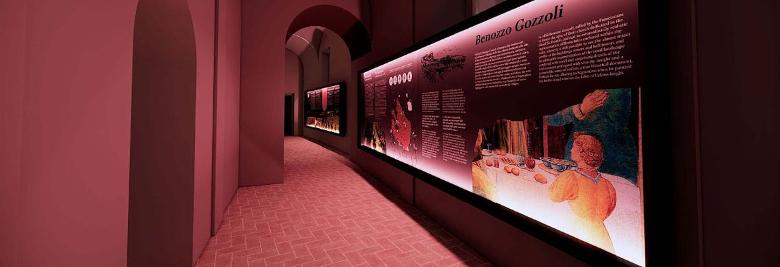Over the centuries, the palace has undergone many interventions, but its original configuration has been preserved: the parallelepiped body on a rectangular plan has cross vaults on the ground floor and a portico on two sides. In the Middle Ages, the arcade housed workshops for craftsmen and merchants.
The corner tower is placed, according to a pattern also found in Montefalco and Spello, at the entrance to the council chamber. The elegant double lancet windows on the façade, which illuminated the assembly hall, overlook the square.
The large staircase, built in the 18th century to replace the original one, provides access to the upper floor; in the Middle Ages, the floor housed the Assembly Hall, but from the 18th century, it was used as the municipal theatre. The top floor was probably used as living quarters.
The theatre, rebuilt in 1886 to a design by architect Antonio Martini with decorations by Domenico Bruschi and Mariano Piervittori, is dedicated to Francesco Torti, a man of letters and jurist from Bevagna (1763-1842). It is one of the smallest theatres in Umbria, seating 251 people.
































